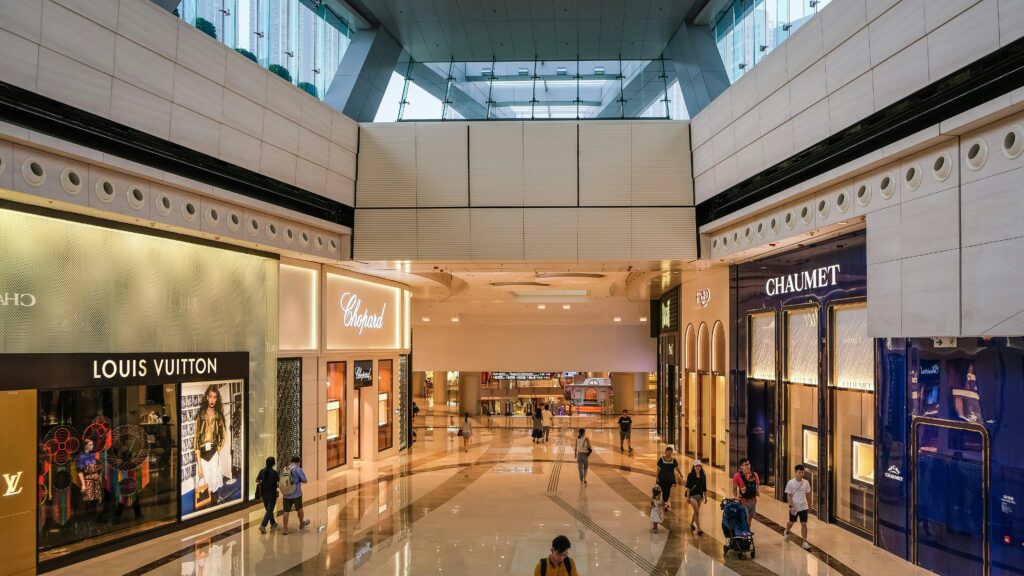
Retail stores are designed to appeal to customers, inviting them to linger and shop. Part of this experience hinges on the fixtures chosen. Those features serve to present the products and improve the entire shopping experience. Each fixture plays a crucial role in organizing and showcasing merchandise, from shelving and display racks to mannequins and signage. In this post, we’ll explore 13 must-have fixtures that every retail shopping store should consider to create an attractive and efficient layout.
1. Display Tables
Tables used to display items are rarely out of the focal point. They give retailers a chance to highlight featured products and new arrivals. Positioning these tables helps stores to find a way to accompany customers from one end to another. Many retail shopping stores rely on such layouts to create a smooth flow and enhance the overall customer experience.
2. Shelving Units
The most vital thing when displaying the products is the shelving. These units are available in a vast assortment of sizes and styles for different items. They aid convenience as you can restock items based on preference, and it can change from time to time.
3. Checkout Counters
They are destination points, not just transaction points. Usually, they use small items to facilitate last-minute purchases. A good counter design will make the payment process easy, which helps retain customers.
4. Mannequins
Mannequins bring apparel to life. They simply inspire the customers to picture themselves in the clothes by showcasing their outfits. Having them positioned close to entrances can also catch attention and lure shoppers in.
5. Signage
Clear signage helps guide customers. Sections, promotions, and prices are always marked on signs so shoppers have no problem finding what they want. Signs that are strategically placed make the shopping journey easier and less confusing.
6. Lighting Fixtures
Lighting sets the mood. You might need different lighting styles in different zones. Accent lighting is great for keeping your eye on certain products, while ambient lighting creates a friendly atmosphere. Lighting has a significant influence on the perception of merchandise.
7. Mirrors
Mirrors enable shoppers to try on accessories or see themselves in clothing. They should have full-length mirrors in their fitting rooms, but they should also have smaller mirrors placed in highly visible areas, which allows customers to buy impulsively.
8. Product Displays
These are displays that exalt particular items or collections. If a display tells a story or ties together a few ideas, it can engage shoppers more emotionally. For example, seasonal displays can provide a new look for the store.
9. Fitting Rooms
An enhanced shopping experience with a comfortable fitting room. Rooms are large with good lighting, seating, and mirrors to create a comfortable environment for customers trying on clothes. By creating positive fitting room experiences, you can drive more sales.
10. Baskets and Carts
Providing baskets or carts makes it easier to shop. More items — and thus larger purchases — are to be carried by customers. Keeping these at the entrance prompts usage.
11. Window Displays
Eye-catching window displays attract passersby. Merchants use these images to lure folks into the stores by featuring must-have items or items in season. We all know an outdated display causes the store to become stale and unattractive; updating these displays regularly helps to avoid this problem.
12. Wall Fixtures
Wall fixtures make efficient use of space by displaying products vertically. Perfect for those smaller pieces or those that will benefit from being at eye-level. You maintain your sanity with the combination of the organized state these fixtures provide.
13. Seating Areas
Creating lounging spots promotes a very laid-back feel. Shoppers enjoy taking a break, especially in larger retail spaces. And if you add seating, friends can be occupied while shoppers peruse longer.
Conclusion
If there is one thing that all retail stores need, it is the right fixtures. They impact product visibility and customer experience. By selecting and positioning these fixtures thoughtfully, retailers can invite customers to explore and subsequently purchase. However, design is what enables every store to look great and serve better, thus making more profit.
